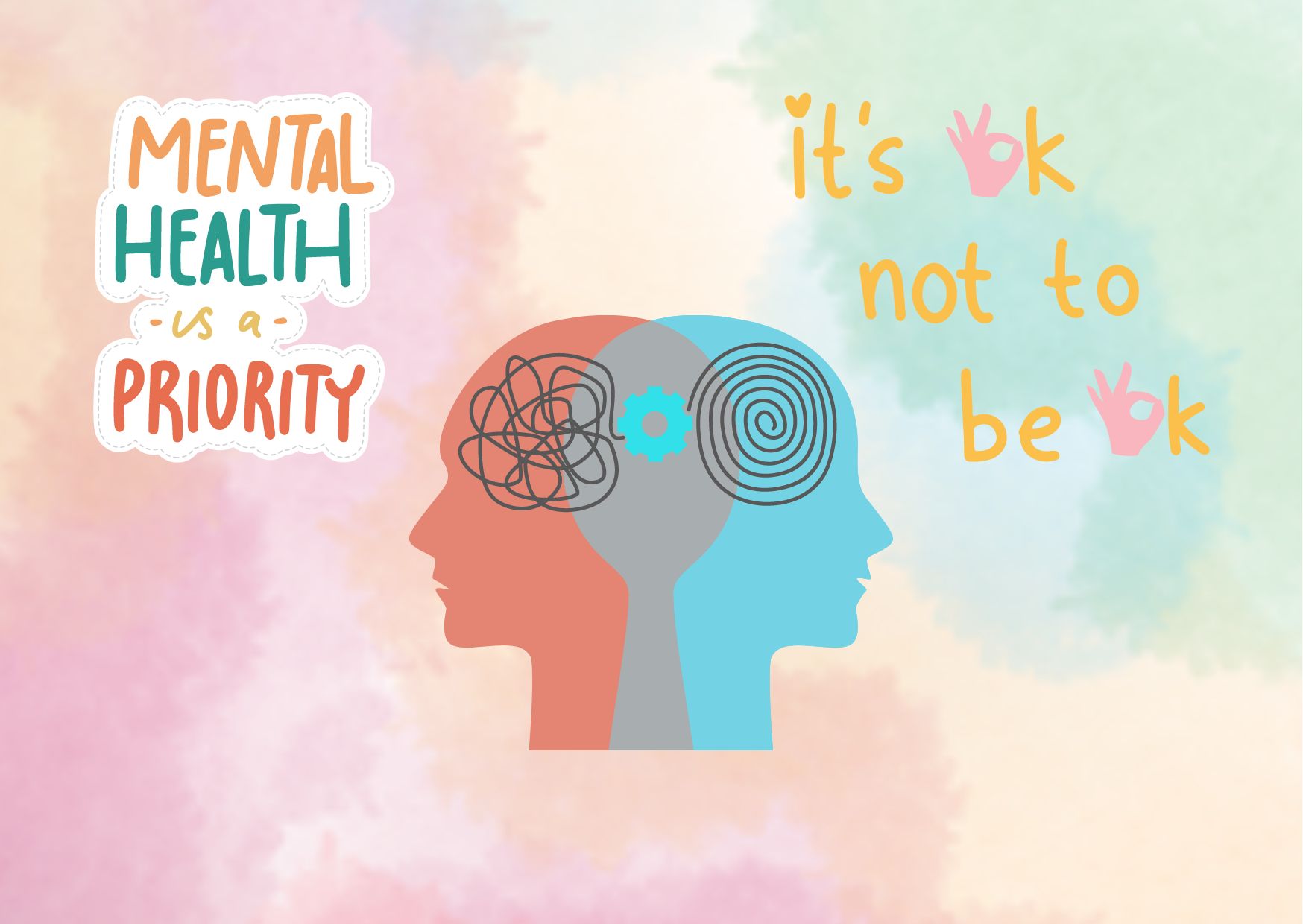The Future of Mental Health Care and Innovation: Exploring the Horizon
The mental health crisis sweeping across nations underscores an urgent need for innovative solutions that can address the rising demand for accessible and effective mental health services. With anxiety and mental health conditions becoming increasingly prevalent, particularly among young adults, traditional therapy models are struggling to meet the overwhelming need. Compounding the challenge is the shortage of mental health providers, leaving a significant portion of the population unable to access the care they require. In this landscape, groundbreaking interventions that transcend conventional approaches hold immense promise for transforming the future of mental health care.
This article delves into the pioneering trends and emerging fields poised to revolutionize mental health treatment. From harnessing the power of nutritional psychology and psychedelic-assisted therapies to leveraging cutting-edge technologies like transcranial magnetic stimulation and virtual reality, we explore the innovative modalities that could potentially alleviate mental health symptoms and bolster overall well-being. Additionally, we examine the role of telehealth and online therapy platforms in expanding access to mental health services and fostering patient-centered care.
Therapy, Reimagined
The mental health landscape is undergoing a transformative shift, with innovative approaches reshaping the delivery of therapy and treatment. At the forefront of this revolution lies the integration of technology, bridging the gap between traditional methods and cutting-edge solutions.
Advantages of Virtual Therapy
The advent of online therapy platforms has ushered in a new era of accessibility and convenience for mental health care. These platforms offer a range of benefits, including:
- Increased Accessibility: Online therapy provides access to mental health treatment for individuals in rural or remote areas, where traditional in-person services may be scarce or unavailable.
- Convenience for Individuals with Disabilities: People with physical or mental disabilities, or those who are housebound, can now access therapy from the comfort of their own homes, eliminating mobility barriers.
- Affordability: With lower overhead costs, online therapists can often offer more affordable treatment options, making mental health care more accessible to those without insurance coverage.
- Flexibility and Convenience: Online therapy sessions can be scheduled at times that are most convenient for the individual, allowing for greater flexibility and seamless integration into their daily routine.
- Reduced Stigma: The anonymity and privacy offered by online therapy can help individuals overcome the stigma associated with seeking mental health support, encouraging them to take the first step towards better well-being.
Role of VR in Exposure Therapy
Virtual reality (VR) technology has emerged as a powerful tool in the field of exposure therapy, particularly for treating conditions like post-traumatic stress disorder (PTSD). Virtual reality exposure therapy (VRET) offers a safe and controlled environment for individuals to confront their triggers and fears.
- Immersive Experiences: VRET creates immersive environments that mimic real-life situations, allowing individuals to experience sights, sounds, smells, and vibrations that simulate their traumatic experiences.
- Controlled Exposure: By gradually exposing individuals to their triggers in a controlled setting, VRET enables them to learn coping strategies and reframe their thinking about the traumatic event, leading to a reduction in anxiety and stress responses.
- Effectiveness: Research has demonstrated the effectiveness of VRET in reducing symptom severity in PTSD and depression, with improvements lasting over time.
- Combination with Traditional Techniques: VRET is most effective when combined with other traditional treatment techniques, providing a comprehensive approach to mental health care.
Bridging the Supply-Demand Gap
As the demand for mental health services continues to rise, innovative solutions are needed to address the shortage of mental health providers. Technology plays a crucial role in bridging this supply-demand gap:
- Leveraging Artificial Intelligence (AI): AI-powered tools can assist in tasks such as triage, risk assessment, and load balancing, reducing the cognitive load on mental health professionals and enabling them to provide high-quality care at scale.
- Integrating Behavioral Health Coaches: Behavioral health coaches can provide 24/7 support, addressing the needs of individuals who do not meet the criteria for clinical intervention but require assistance with stress, anxiety, and poor sleep.
- Coordinated Care: Partnerships between organizations that provide mental health and primary care services can facilitate integrated and coordinated care, ensuring that physical and mental health conditions are addressed holistically.
- Addressing Cultural Competence: Offering services in multiple languages, training staff on culturally responsive care, and developing content on topics like racial trauma can help address disparities in access and outcomes for marginalized groups.
- Regulatory Reforms: Relaxing regulations that restrict the practice of mental health professionals across state lines can expand access to care, particularly for underserved populations in rural areas.
By embracing these innovative approaches, the mental health care system can better meet the growing demand for services, improve accessibility, and provide more personalized and effective treatment options for individuals in need.
The Emerging Field of Nutritional Psychology
The Gut-Brain Connection
The intricate relationship between the gut and the brain has emerged as a fascinating area of research, shedding light on the profound impact of nutrition on mental well-being. Scientists have discovered a bidirectional communication pathway between the gut microbiota and the brain, revealing that the health of our gut can influence our emotions and behavior, and vice versa.
Emerging research has shown that the gut microbiota, the trillions of microorganisms residing in our digestive system, produce various neurotransmitters and chemicals that can directly affect our brain chemistry and mood. For instance, the gut bacteria play a crucial role in the production of serotonin, a neurotransmitter involved in regulating mood, sleep, and appetite.
Moreover, the gut microbiota communicates with the brain through the vagus nerve, a major nerve that connects the gut and the brain. This communication pathway allows the gut microbiota to send signals to the brain, influencing emotions and behavior. A diverse and healthy gut microbiota has been linked to better mental health outcomes, including reduced risk of anxiety and depression.
Incorporating Nutrition into Treatment Plans
The emerging field of nutritional psychology recognizes the importance of incorporating nutrition into mental health treatment plans. A diet rich in fiber, fruits, vegetables, and fermented foods promotes a diverse and healthy gut microbiota, which can positively influence mental well-being.
Conversely, a diet high in processed foods, sugars, and unhealthy fats can negatively impact the gut microbiota, leading to dysbiosis (an imbalance of gut bacteria) and increased risk of mental health disorders. Proper nutrition plays a crucial role in maintaining the balance of the gut-brain axis.
- Prebiotics and Probiotics: Optimal levels of essential nutrients, such as prebiotics and probiotics, are needed to support a healthy gut microbiota. Prebiotics are types of fiber that act as food for beneficial gut bacteria, while probiotics are live bacteria or yeasts that can support the growth of good bacteria in the gut.
- Dietary Interventions: Research has shown that a diet rich in prebiotic and probiotic foods, such as whole grains, legumes, yogurt, and sauerkraut, can positively influence the gut-brain axis and enhance mental well-being. Dietary changes and nutritional supplementation may also be beneficial in improving treatment response and quality of life among patients with depression and anxiety.
- Complementary Approach: The low cost and high effectiveness of complementary dietary interventions, tailored to the specific needs of each patient, may confer additional benefits to both mental and physical aspects of health.
Building a Formalized Curriculum
Recognizing the importance of the diet-mental health relationship, organizations like the Center for Nutritional Psychology (CNP) are working to fill the void in the current mental healthcare model by consolidating research, developing curriculum, and creating a methodology through which the role of diet in supporting mental health can be understood and applied.

